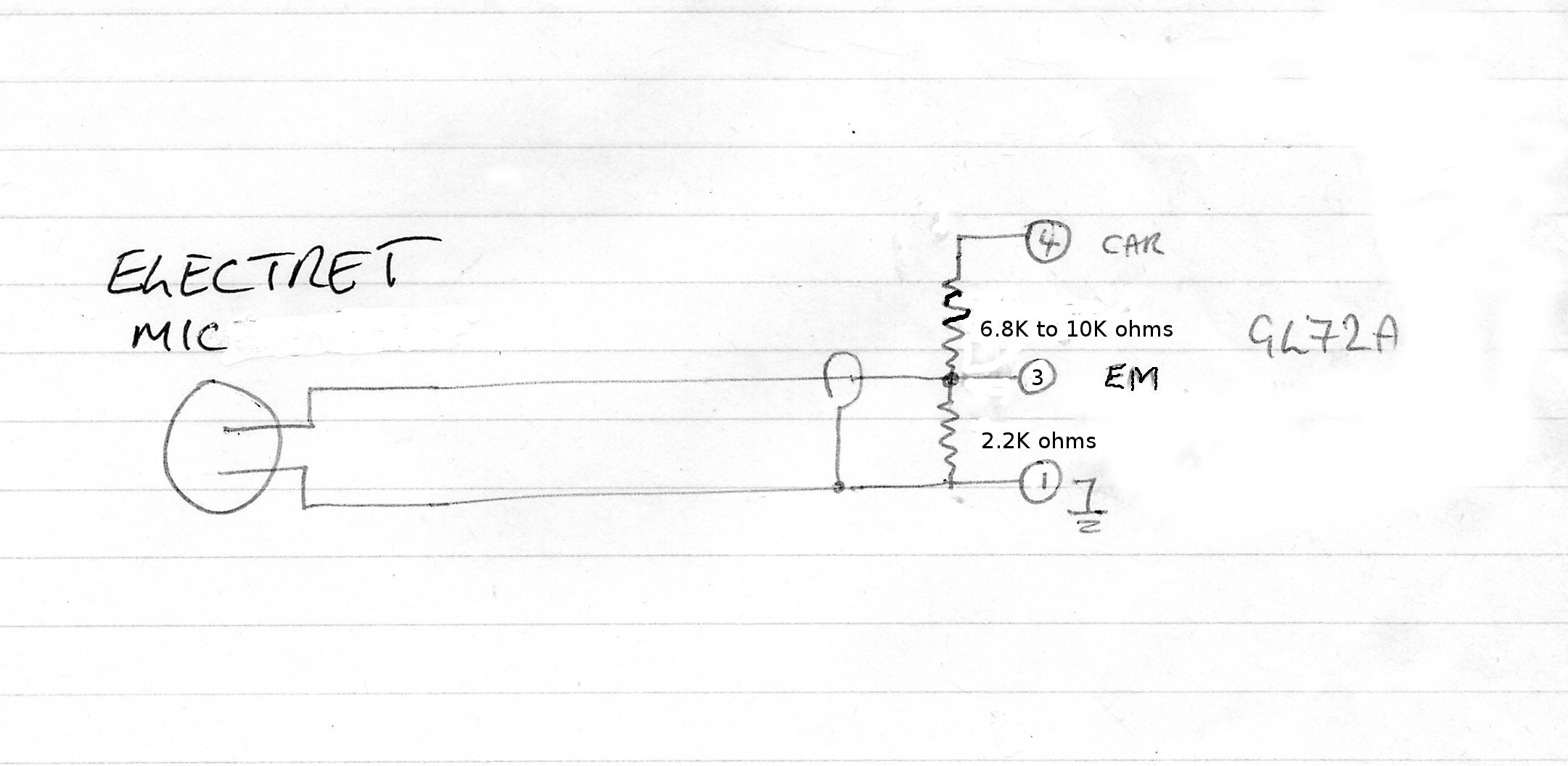
Microphones and the GL72A/B
see:-
http://en.wikipedia.org/wiki/Electret_microphone
The radio will work with any type of microphone. Basically pin 3 is for the microphone audio input and pin 4 provides a 12v supply for micrphone amplifiers in the headset.
In a glider the most common was the EM (electromagnetic) microphone which is low impedance and gives out a small but clear signal. They are prone to interference from ignition systems, so are not in headsets intended for powered aircraft. You probably had this type already. It is wired directly between pins 1 and 3 ( see original installation wiring diagon the website). They are the simplest solution.
Powered aircraft used to use carbon mics which are also fairly low inpedance and gave a much higher signal output, but need a voltage (5-12V) to make them work ( wired directly between pins 1 and 4). They are very good at noise reduction but usually give a poor distorted output
Some expensive headsets have EM microphones with amplifiers built-in so they could be used instead of a carbon mic directly between pins 1 and 4.
The electret microphone is more modern and gives a good clear medium signal output and has a higher output impedance than the others. It also requires a voltage to make it work (but not as high as that normally available from mic skts or radios in powered aircraft). They are becoming common but need a couple of external resistors soldering between pins 1,4 and 3 to give the right signal level and impedance into the Radio.
The drawing below shows what is needed to make an Electret microphone work in aircraft with wiring direct from the electret capsule.
It maybe that these resistors are now mounted internally to the headsets to make them compatible with modern radios in powered aircraft - you would need advice from the supplier.
